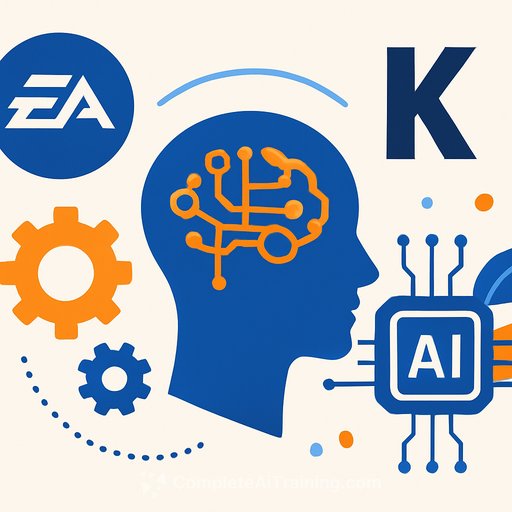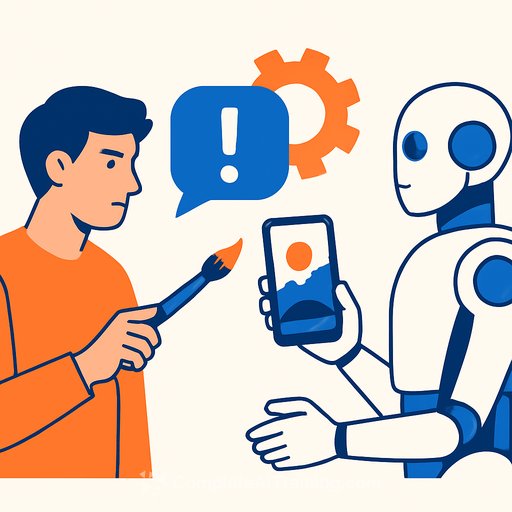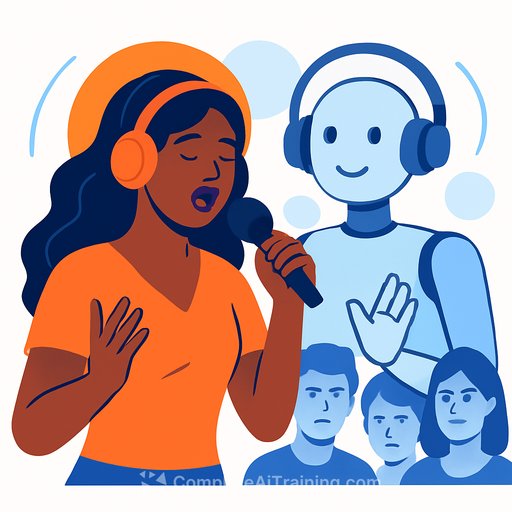EA and Krafton bet big on generative AI to accelerate creation and keep artists in control
Two of gaming's biggest publishers are making aggressive moves into generative AI. Electronic Arts (EA) has partnered with Stability AI to co-develop models, tools, and workflows. Krafton is retooling its entire company around agentic AI, with a plan to complete its platform and data foundation by the second half of 2026.
For working creatives, this isn't a distant headline. It points to new pipelines where you sketch ideas faster, iterate with less friction, and keep quality high without giving up authorship.
EA x Stability AI: tools that speed up real work
EA's collaboration with Stability AI focuses on practical applications that plug into day-to-day production. That includes generating PBR materials via artist-driven workflows, creating accurate 2D textures, and pre-visualizing full 3D environments from prompts.
The goal: faster prototyping and clearer visual storytelling while maintaining creative standards. As EA's VP of Creative Innovation Kallol Mitra put it, the point is to give artists, designers, and developers "the power to dream bigger and build more."
Context worth noting: EA recently agreed to be acquired by the Public Investment Fund of Saudi Arabia, Silver Lake, and Affinity Partners in a $55B deal, drawing criticism over potential debt load and foreign influence. Meanwhile, EA continues to push on production efficiency and creator tools through this AI partnership with Stability AI.
Krafton's AI-first push: company-wide infrastructure and workflow change
Krafton (publisher of PUBG and Subnautica) is committing to agentic AI across the organization. The plan centers on automating routine work so teams can focus on creative decisions and solving harder problems.
The company outlined major investments, including $70B for GPU cluster infrastructure and about $21B annually from 2026 for employee AI tool usage. It's a long play to build stronger internal workflows and long-term creative capacity.
- Stage 1: Build an AI-first culture with learning platforms and a company hackathon.
- Stage 2: Restructure teams and processes to integrate AI into everyday work.
- Stage 3: Expand growth opportunities with mobility across roles and new responsibilities.
CEO Kim Chang-han says Krafton will "leap forward" by using AI to grow people and expand what teams can tackle. The company expects its AI platform and data integration foundation to be finalized by the second half of next year, setting a company-wide operation layer for future projects.
What this means for creatives
- Faster ideation: Generate texture sets, mood boards, and scene pre-viz in minutes, then refine by hand.
- Higher iteration speed: Try 10 directions before lunch instead of 2 by end of day.
- More time on taste and detail: Offload repetitive steps and keep the judgment calls.
- New roles and skills: Prompting as art direction, system-aware design, and AI QA for quality and consistency.
How to prepare without waiting for internal tools
- Create prompt libraries for materials, lighting setups, and environment styles you use often.
- Sharpen your PBR fundamentals so AI outputs land closer to production-ready.
- Prototype scene pre-visualization to speed storyboarding and layout decisions.
- Set quality bars: define "acceptable" for texture fidelity, color accuracy, and edge cases before you scale.
- Document your style system so AI variations stay on brand and on model.
What to watch next
- Early-access AI tools inside major engines and DCC pipelines.
- Hiring for AI-fluent creative roles (technical artists, tool-focused art directors, AI pipeline producers).
- Model transparency and data policies that affect licensing and client use.
- Regulatory review and industry response around EA's pending acquisition.
If you want a focused way to level up for these workflows, explore role-based options at Complete AI Training.
Your membership also unlocks:






